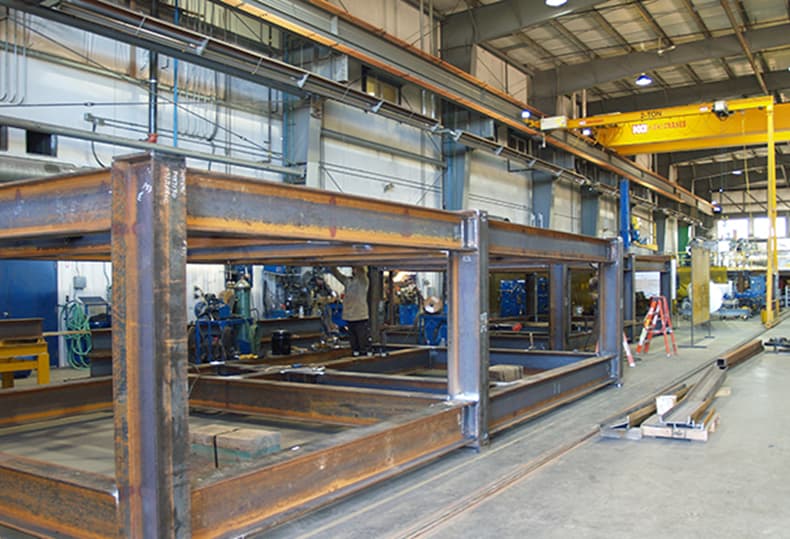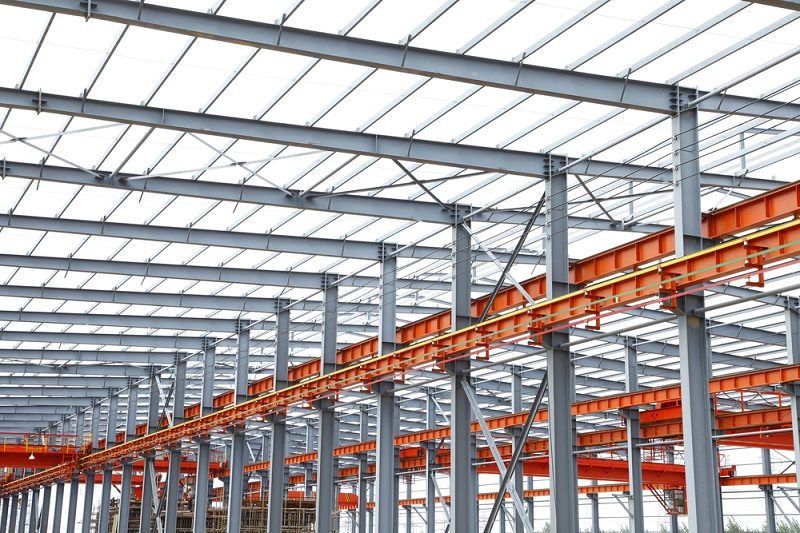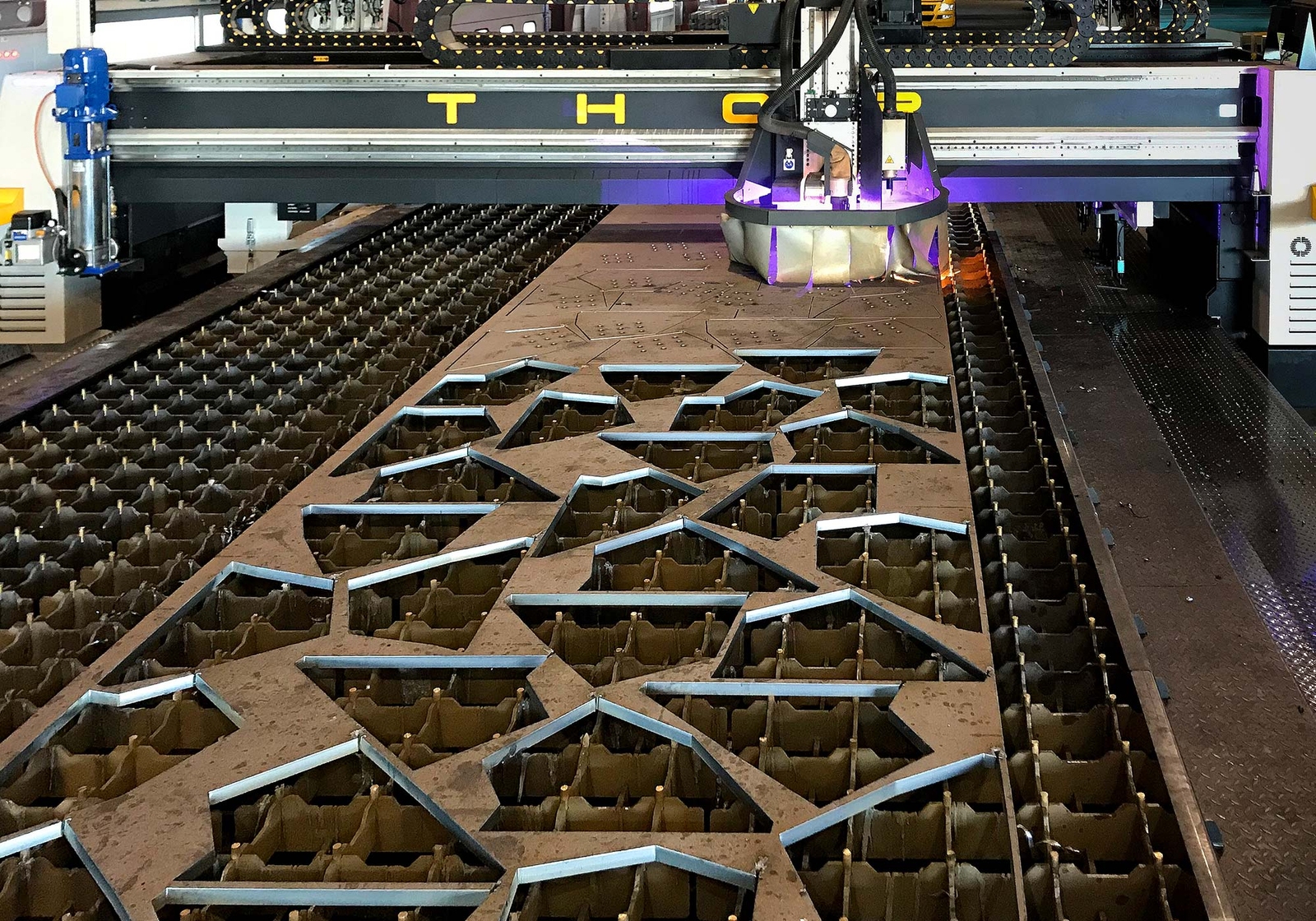Finest Steel Fabricators Melbourne: Changing Ideas into Reality
Finest Steel Fabricators Melbourne: Changing Ideas into Reality
Blog Article
Cutting-edge Fads in Steel Manufacture: Enhancing Resilience and Precision
In the world of steel manufacture, the quest of durability and accuracy has actually caused a wave of ingenious trends that are improving the market. From improvements in welding modern technologies to the assimilation of robot automation in construction procedures, the landscape of steel manufacturing is progressing rapidly. High-strength alloy growth, combined with the use of 3D modeling and simulation software, is pressing the boundaries of what is possible in terms of structural honesty and precision. The expanding emphasis on sustainable techniques in steel production is not only driving effectiveness but additionally promoting a much more eco conscious method to manufacture. These trends are not just forming the existing but likewise preparing for the future of steel fabrication, promising more improvements in durability and precision.
Advanced Welding Technologies
In the realm of steel construction, the fostering of innovative welding technologies has considerably transformed the market's method to accomplishing remarkable top quality and accuracy in architectural welds. Advanced welding innovations, such as laser beam of light welding and friction stir welding, have become game-changers in the field. Laser beam welding uses a focused laser light beam to join steel elements with remarkable accuracy and rate, making it excellent for intricate layouts and thin materials. On the various other hand, friction mix welding develops unbelievably solid bonds by mechanically intermixing the molecules of the materials at the joint, getting rid of the need for thawing the metal. These modern technologies offer numerous advantages, consisting of decreased heat-affected zones, marginal distortion, and boosted mechanical homes in the welded joints. By leveraging these innovative welding methods, steel fabricators can boost the durability, strength, and accuracy of their structural welds, fulfilling the progressively demanding requirements of modern-day building projects.
Robotic Automation in Manufacture
Embracing robotic automation has ended up being a cornerstone of modern-day steel construction methods, improving and improving procedures effectiveness throughout the industry. Robotics are transforming the method steel elements are made, providing unrivaled accuracy and rate while decreasing human error. These automated systems can deal with repetitive tasks with constant precision, bring about better final result.
One key advantage of robotic automation in steel manufacture is the ability to function all the time without fatigue, considerably increasing production output. This constant procedure reduces downtime and speeds up task timelines, inevitably saving prices for suppliers. In addition, robotics can be set to execute complex tasks that may be difficult or unsafe for human employees, enhancing safety in the work environment.
In addition, robotic automation makes it possible for seamless combination with various other electronic modern technologies, such as computer-aided design (CAD) software application and Internet of Points (IoT) systems (Alpha reo). This interconnected strategy enhances communication in between various stages of construction, maximizing workflows and making sure real-time monitoring and control. As the steel construction market continues to advance, robotic automation stands apart as a transformative pressure driving performance and accuracy in making processes

High-Strength Alloy Growth
The advancement of high-strength alloy development in steel construction is reshaping the market's method to improving material durability and performance. High-strength alloys are crafted to show premium mechanical residential or commercial properties, such as increased tensile stamina, strength, and rust resistance compared to traditional steel grades. By incorporating these innovative alloys into fabrication procedures, suppliers can create elements that withstand greater stress and anxiety degrees and extreme environments, resulting in more sturdy and reliable output.
One key benefit of high-strength alloy growth is the capability to decrease product density without endangering architectural stability. This not only causes lighter-weight elements but likewise adds to cost savings and boosted effectiveness in manufacture and setting up procedures. Additionally, the enhanced strength-to-weight proportion of these alloys enables the layout and building and construction of frameworks with higher load-bearing abilities while lessening overall weight.
3D Modeling and Simulation Software Program
Innovations in steel construction procedures have actually been significantly moved by the combination of advanced 3D modeling and simulation software program tools. These tools read what he said permit fabricators to produce detailed online versions of their tasks, enabling them to visualize the final product with accuracy prior to any type of link physical job begins.

Sustainable Practices in Steel Production
Including sustainable methods right into steel manufacturing processes is crucial for minimizing ecological effect and making certain long-lasting resource accessibility. One crucial lasting practice is the fostering of energy-efficient technologies to reduce greenhouse gas exhausts during the steel production process. This includes using eco-friendly energy sources, such as solar or wind power, to power steel plants and applying energy-efficient equipment to enhance energy usage.
One more crucial element of lasting steel manufacturing is the responsible sourcing of resources. This includes making certain that the iron ore and other resources made use of in steelmaking are gotten from environmentally friendly and honest resources. By advertising transparency in the supply chain and sticking to rigorous ecological standards, steel producers can lessen the adverse impacts of resource extraction on regional ecological communities and communities.

Verdict
To conclude, the cutting-edge fads in steel construction such as sophisticated welding technologies, robot automation, high-strength alloy advancement, 3D modeling and simulation software program, and sustainable practices are boosting the longevity and accuracy of steel products. These innovations are reinventing the steel manufacture market by improving quality, performance, and sustainability. It is clear that the future of steel fabrication exists in accepting these cutting-edge technologies to satisfy the demands of contemporary building and manufacturing sectors.
In the realm of steel construction, the pursuit of resilience and accuracy has led to a wave of cutting-edge patterns that are improving the industry.In the realm of steel construction, the adoption of advanced welding modern technologies has dramatically transformed the market's method to attaining superior top quality and precision in structural welds. As the steel manufacture industry continues to advance, robotic automation stands out as a transformative force driving effectiveness and accuracy in making processes.
Moreover, reusing and reusing steel scrap and waste products play a substantial role in improving the sustainability of steel manufacturing. metal fabrication melbourne.In conclusion, the innovative patterns in steel construction such as innovative welding technologies, robotic automation, high-strength alloy advancement, 3D modeling and simulation software application, and lasting techniques are boosting the durability and precision of steel items
Report this page